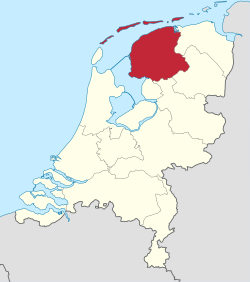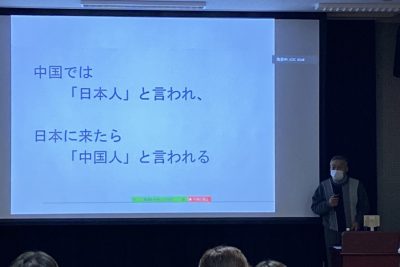Different Dimensions of Bilingualism (Part 2. of 2)

Continuing from Part 1. of 2.
This blog post was created as part of the interdisciplinary zengaku seminar "Different Dimensions of Bilingualism" offered at the University of Tokyo during the 2023 academic year.
How to Teach in Multicultural Classroom by OGAWA Kohta (Undergraduate student, The University of Tokyo)
Japanese society has often been described as a monoethnic and monolingual country, but in fact this is not the case. Nowadays people with diverse cultural backgrounds live in Japan. In recent years, the number of non-native Japanese students (although it is difficult to determine what makes one Japanese) has been increasing in Japanese schools. A Brazilian child who speaks Portuguese at home may not be able to speak Japanese when entering school. Therefore, people from other linguistic backgrounds would need a specific education to become bilingual. (As I’m interested in becoming teacher, this article.)
The biggest obstacle that those students face is the language barrier. How should those students be taught? Japanese elementary schools have special-needs classes for students with disabilities, but isn’t it a good idea to gather students who do not speak Japanese there as well?
In recent years, the concept of Inclusive Education has been introduced from overseas. The aim of Inclusive Education is not to place students with disabilities in special-needs classes, but to have them attend the “normal” classes.
On the one hand, The Ministry of Education, Culture, Sports, Science and Technology (MEXT) states that Inclusive Education enables students with disabilities to live happily as members of the local community. On the other hand, students without disabilities can foster understanding of people with disabilities and to be able to realize a fair society that is comfortable for everyone to live in(MEXT 2011).
This would also apply to students who do not speak Japanese. They should have the same rights to attend classes and live together as those who speak Japanese. It will provide an opportunity for students who speak Japanese to acquire the ability to live in cooperation with others in multicultural and multilingual societies.
(However, it is obvious that it is impossible) Economically speaking, it seems quite difficult to have teachers who can teach in all languages. It is also difficult to secure personnel to support students who don’t speak Japanese. Izumo City in Shimane, where many Brazilians live, employs support staff who can teach Japanese, but the number is not enough, as more and more Brazilians are coming to the city (MEXT 2018).
One of the possible solutions would be the introduction of digital technologies. Translation applications have developed rapidly in recent years. In addition, digital equipment has been introduced to schools, even more after the spread of the Covid-19. (I believe that this is a good idea.) Another good practice would be to promote the use of translation tools when students need help in the classroom.
Reference
MEXT, promoting special needs education to build an inclusive education system for the development of a symbiotic society. (Report),2011
=====
Education and Language Preservation by S.I. (Undergraduate student, The University of Tokyo)
Various approaches to language preservation exist in the world, ranging from measures on legal and administrative levels to grassroots movements by local citizens. This text aims to consider whether measures taken on administrative levels of education are enough to effectively preserve regional languages. Only the case of Frisian will be examined in brief for this occasion.
There exists a common understanding on the administrative level that the preservation of Frisian holds significant value. Frisian, a language spoken mainly in the northern Duch province of Friesland (Figure 1), is recognized as one of the official languages of the province alongside Dutch. On a legal level, the Frisian people are recognized as an ethnic minority group in the Netherlands, and thus several regulations are in place to preserve their unique language and culture. This principle is reflected in the provincial educational policy as well, where teaching Frisian in primary education is deemed mandatory (Bayat et al. 2023, pp.82-83; Ministry of the Interior 2018, pp.13-15).

Figure 1. Location of Friesland
Regardless, the weakening position of Frisian in educational environments remains a reality. For instance, the Council of Europe pointed out that the situation is “constantly deteriorating” due to insufficient class time and the shortage of qualified teachers and materials (Committee of Experts 2022, pp.26-29). Although government entities play a vital role in presenting the principles for language preservation, it should also be stressed that practices occur in real-life school environments. What is required in regional language education and preservation may be the mutual perspective derived from practice and principle.
References
Bayat, Z., Kircher, R., & Velde, H. D. (2023). Minority language rights to education in international, regional, and domestic regulations and practices: the case of Frisian in the Netherlands. Current Issues in Language Planning, 24:1, 81-101. https://www.tandfonline.com/doi/pdf/10.1080/14664208.2022.2037291. Retrieved 15 January 2024.
Committee of Experts of the European Charter for Regional or Minority Languages (2022). Seventh evaluation report on the Netherlands. Council of Europe.https://rm.coe.int/netherlandsecrml7-en/1680aa8930. Retrieved 15 January 2024.
Ministry of the Interior and Kingdom Relations of Netherlands. (2018). Administrative agreement on the Frisian language and culture.https://rm.coe.int/netherlandspr6-appendix-1-nl/168095007b. Retrieved 15 January 2024.
Friesland (2023). Wikipedia, the Free Encyclopædia. https://en.wikipedia.org/wiki/Friesland. Retrieved 15 January 2024.
=====
Multilingualism in School Education and Reading Habits by SHAO Yifan (Undergraduate student, The University of Tokyo)
As the world shrinks due to improved transportation and networking technologies, there have been more and more people who speak two or more languages. Many studies suggest that around half of the world’s population is multilingual (Margolis, 2023; Bruggink et al, 2022). Since international connections continue to strengthen, more populations migrate, and there are more international exchanges, it would only be logical to predict that there will be more actively multilingual people in the future.
How and when children learn their first language(s) often affects the reading fluency in the child’s secondary language, although it is found that children often have a lower reading level in their second language due to the lack of understanding its vocabulary network (Bruggink 2022). In a study done about English-speaking multilinguals with “[o]ne hundred fifty-five children in grade 4 through 6” and 38 adults, it was found that though the children with multilingual abilities performed worse than their monolingual counterparts, the multilingual adults showed patterns that suggested that multilingual abilities may have allowed for “more inferencing, more connecting between sections of text and more reference to the text structure.” That is, knowledge in another language helps to create unique variations in the understanding of English texts (Friesen et al, 2022).
Being educated in various languages allows a child to understand the vocabulary and system of their non-primary language, which is crucial in deciding whether the child will be able to use them fluently. It can be concluded that being educated in multiple languages has/might have a positive impact on the individual’s understanding of a text, and such education is to be encouraged.
References
Bruggink, M., et al. Reading Comprehension and Multilingual Students. In: Putting PIRLS to Use in Classrooms Across the Globe, Springer, Cham, 2022.https://doi.org/10.1007/978-3-030-95266-2_4. 27/12/2023
Freisen, Deanna C., et al. Reading comprehension and strategy use: Comparing bilingual children to their monolingual peers and to bilingual adults, Frontiers in Psychology. 2022.https://www.ncbi.nlm.nih.gov/pmc/articles/PMC9730700/ 27/12/2023.
Margolis, Eric. Why bilingual literature is needed in a place like Japan. Japan Times. 5/5/2023.https://www.japantimes.co.jp/life/2023/05/05/language/bilingual-literature-needed-place-like-japan/ 27/12/2023








